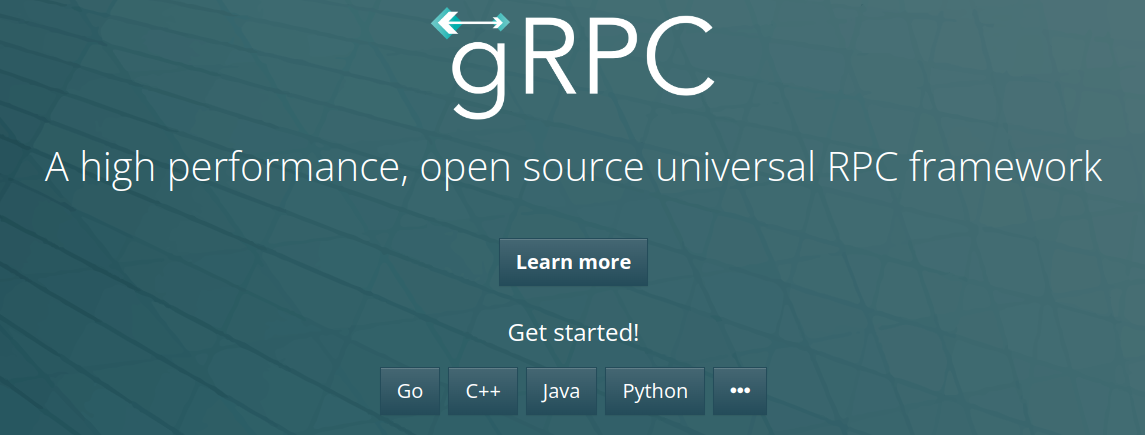You will often encounter REST and gRPC when dealing with APIs. Even though Rest has dominated this field for many years, gRPC is proving to be a worthy competitor.
Rest and gPRC are two different ways that you can design an API. APIs act as a communication bridge between services that may represent complex systems residing in different computers or written in different languages.
This article will introduce both Rest and gRPC, share their similarities, differences, and where to use each.
What is Rest?

Rest (Representational State Transfer) is an architectural software approach that dictates rules on how software components exchange data. Rest is based on the web’s standard communication protocol, HTTP.
All the APIs based on the REST architectural style are called RESTful APIs. On the other hand, web services following REST architectural design are known as RESTful web services.
REST architectural style is guided by these principles;
- Uniform interface: The server should transfer data in a standard format. However, the data transported can be in a different format from the internal representation of the server application’s resource.
- Statelessness: The server should complete every client request independently, regardless of the previous requests. Client requests for resources can be in any order, and every request is isolated from the rest.
- Layered system: Presents a layer of authorized intermediaries between the server and the client. The client can connect with these authorized intermediaries and still receive responses from the server.
- Cacheability: Some responses are stored on an intermediary or the client to improve response time.
- Code on demand: Servers temporarily customize or extend client functionality by transferring software programming code to the client.
Benefits of REST

- Scalable: REST APIs are known for their scalability as they optimize client-server interactions. Caching and statelessness are the major features that reduce server load.
- Flexible: RESTful APIs offer total client-server separation. Such services will decouple and simplify various server components, which can evolve independently.
- Independence: You can write server and client applications in different programming languages without affecting the API design.
Use cases of Rest
- Web APIs
- Web services
- Microservices Architecture
What is gRPC?
gRPC is a Remote Procedure Call (RPC) framework that can run in any environment. This open-source framework is designed as a high-performance protocol that can efficiently connect services across and in data centers.

A client app can call a method on a server app on a different machine as if it was a local object. With gRPC, you define a service and specify the methods you can call remotely with their parameters and return types.
gRPC has pluggable health checking, authentication, load balancing, and tracing support. This framework uses HTTP 2 and Protocol Buffers for data transmission. When data is being exchanged, a procedure is called instead of a resource URL
Benefits of gRPC
- Scalable: gRPC allows you to install runtime environments with a single command and start scaling millions of RPCs/ second.
- Simple service definition: Use Protocol Buffers to define your services and get them running.
- Cross-platform: This framework generates idiomatic client and server stubs for different platforms and languages.
- Bi-directional streaming and integrated auth.
Use cases of gRPC
- Web APIs
- Web services
- Streaming applications
- Microservices Communication
REST and gRPC: Similarities
- Data exchange mechanism: Both architectural designs allow servers and clients to exchange data. However, this data is shared based on certain rules.
- Suitable for scalable and distributed systems: The asynchronous communication and stateless design of both REST and gRPC make it easy to scale their APIs.
- Use HTTP-based communication: Both use HTTP, the most-preferred communication protocol of the web.
- Flexible: You can use REST and gRPC with different programming languages and technologies.
REST vs. gRPC

REST and gRPC services differ in the following ways;
Data exchange
In REST APIs, data passed from one software component to another has to be expressed in JSON format. JSON must be serialized and translated into a programming language for data exchange. However, Rest APIs can also exchange data formats like HTML and XML.
gRPC, by default, utilizes the Protocol Buffers format. However, it also natively supports JSON. Protocol Buffers are not human-readable. The server uses Protocol Buffer interface description language to define a data structure. gPRC then serializes the data structure into a binary format. It will then deserialize the data into any specified programming languages.
Communication model
In REST, a client sends a single request to a server; the server then sends a reply in response. The client must wait for the server’s response before continuing operations. It is a request-response model.
In gRPC, a client can send single or multiple server requests, resulting in single or multiple replies, respectively. Data connections can be many-to-many, many-to-one, one-to-many, or one-to-one. gRPC uses a client-response communication model.
Code generation
gRPC has built-in native server-side and client-side code generation features. You can find these features in different languages courtesy of the Protocol Buffers compiler. gRPC generates the server-side and client-side code after defining the structure in the proto file.
REST lacks built-in code generation features. If you need this feature, you can use third-party tools.
HTTP protocol

REST APIs use HTTP 1.1. To send a request on a REST service, you need a resource URL. HTTP 1 sends information between a computer and a web server. The resource URL in the REST service is visible to the client. The API designers control the structure of resource URLs.
gRPC uses HTTP 2. This HTTP version was introduced in 2015 and is used in browsers like Internet Explorer, Safari, and Chrome. Unlike HTTP 1, which keeps everything in plain text, this newer format utilizes binary format encapsulation, resulting in more data delivery options and speeding up the entire process.
Payload data structure
REST uses XML or JSON to send and receive data. JSON is the most-used format for sending dynamic data in REST as it is flexible and does not require any structure. JSON data is also human-readable. The only issue with JSON is not that fast as it must be serialized and translated during data transfer.
gRPC uses Protocol Buffers to serialize payload data. This is a highly compressed format that reduces the messages’ data. This framework uses Protobuf to automatically convert strongly-typed messages to the client’s and server’s programming languages.
Browser support
REST is supported on all browsers as it uses HTTP 1.1. This makes it a perfect choice for web services and APIs.
gRPC has limited support for browsers as it is based on HTTP 2. To support all browsers, you must add gRPC-web as a proxy layer. For this reason, gRPC is mostly adopted for internal systems.
Client-server coupling
REST is a loosely coupled architectural design. It means the client and server need not know about each other’s implementations. This feature makes it easier to evolve a RESTful API over time, as you don’t need to change the client code when you alter server definitions.
gRPC is a tightly-coupled framework where the server and the client must have access to the same proto file. If you need to make any changes to the file, you must also update the server and client.
Rest vs. gRPC: Quick Comparision
| Feature | REST | gRPC |
| HTTP protocol | HTTP 1.1 | HTTP 2 |
| Browser support | Supports all browsers as it uses HTTP 1.1 | Lesser browser support as it uses HTTP 2 |
| Code generation | Uses third-party tools | Built-in code generation features |
| Design Approach | Entity-oriented design | Service-oriented approach |
| Data access | Resource URLs | Service calls |
| Bidirectional data streaming | Unavailable | Available |
| Implementation | No common software is required to implement REST on the client or server-side | gRPC software is needed both on the client and server sides. |
| Communication model | A single client communicates with a single server | Multiple communication models like one client sends requests to multiple servers, one server communicating with multiple clients, or one server communicating with one client. |
When to use REST
RESTful APIs and web services are very popular. RESTful services are easy to implement, structure data, flexible and readable. You can use REST in the following instances;
- Web-based architectures: You can create web, mobile, and multiplatform APIs using REST architectural design.
- Simple data communications: REST uses JSON, an easy-to-read data format.
- Public-facing APIs: If you intend the public to consume data and use your API, REST will be a good choice due to its readability feature.
When to use gRPC

gRPC is not as popular as RESTful services. However, it also has unique features that will make it stand out in the following applications;
- Multi-language systems: gRPC suits microservice architectures written in different programming languages and where the API is unlikely to change.
- Microservices connections: Features like bi-directional streaming and low browser support make gRPC a good choice for internal APIs.
- Real-time streaming networks: You can use gRPC with internal services that deal with large data loads and require real-time streaming.
Authors opinion
Even though gRPC has some specific features that may overshine REST in applications like the Internet of Things, the latter wins due to its readability, flexibility, and wide adoption. gRPC’s lower browser support makes it a not-a-so-good choice for developers who want to build web services.
The universal support for RESTful services makes REST the ideal API architectural style for web and microservices integrations.
Conclusion
REST and gRPC are among the many API architectural styles you can choose when building your next API. The final pick will depend on the product you want to build. RESTful services will be a perfect fit when building public-facing APIs, while gRPC is a good choice for services like mobile applications that don’t require browser support.
Next, check out our article on how to create gRPC from scratch using Java.

